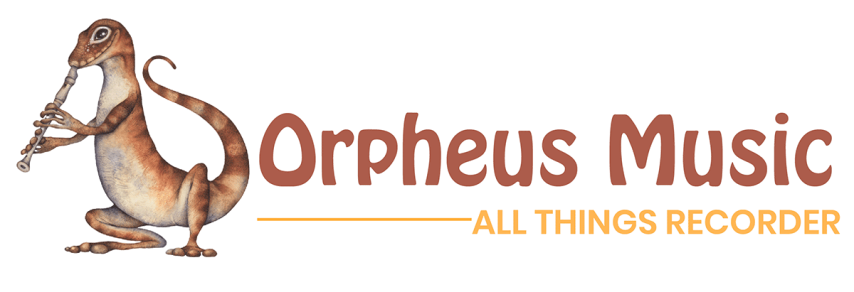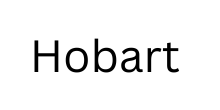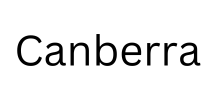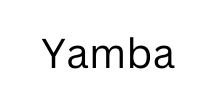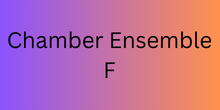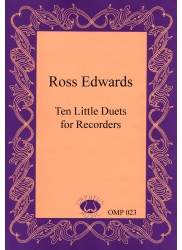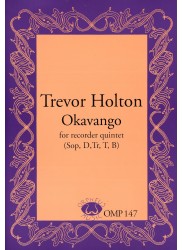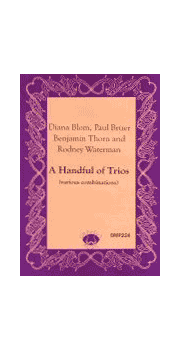No products
Prices are tax included
Subcategories
Tutor: RUTH WILKINSON
Recueil de Pièces par M. Blavet
Please study and be prepared to play both parts of the following:
Suite page 6
Entrée de chaße
Air de Zaïde
Gavotte de Corelli
Theme page 14 and all variations 1-5
Brunette O Dieux page 18
Brunette Plaignez-vous page 20
Menuet Page 27 and variations 1-3
Menuet pages 26 and 27 plus variations 1 to 3.
We will touch on other works in the volume as the week progresses.
We will not necessarily play all the notes of all the set pieces. We will use parts of these works to identify and practice various techniques as required by the class. We do not expect you to have mastered all the notes by the course.
Tutors: ANNA STEGMANN
Session 1: Technique class - We will not necessarily play all the notes of all the set pieces. We will use parts of these works to identify and practice various techniques as required by the class. We do not expect you to have mastered all the notes by the course.
Set works instruction1) Methodische Etüden für 1-2 AltblockflötenCode and publisher: Edition Floeno; Nr. 1490Instructions:- Please prepare the pieces with modulations up until 4# and flats. If you go further: that’s a bonus! :)- you don’t need to practice no. 11 and 12 and the second voices.- start practicing all studies very slowly and set a metronome speed at a tempo you feel you can manage without too much stopping. Pick one tonality at a time and start speeding it up with the metronome going in steps of five; e.g. start at 60/ crotchet and if you can manage it at that speed, advance to 65/ crotchet. Your final speed is not as important as the speed “journey” you undergo.2)Telemann: 6 Canonic Sonata, op 5 TWV 40:118-123; prepare in F-major (no 3); N.B.! In the Schott edition, this is no. 2!!! But I really mean the one F-major in Amadeus.Code and publisher: Amadeus, BP 0320Instructions: Enjoy playing! We will look in detail at sonata 3 in F-major.If you want to learn from the other edition please note: ED Schott version its no.2, in Amadeus its no. 3
Tutors: DANIEL MURPHY
Session 1: Technique class - We will not necessarily play all the notes of all the set pieces. We will use parts of these works to identify and practise various techniques as required by the class. We do not expect you to have mastered all the notes by the course.
In the Suzuki book please focus on:
No. 4 What Shall We Do This Evening (van Eyck)No. 1 Menuet II (Telemann)No. 6 Suite No.3 - Movement 5 Menuet - Le Mignon (Hotteterre)OptionalNo. 3 Giga (Corelli)Handful of TriosWith Minuetto - if you do not play bass (or even have one) please have a look at the bass part - I will bring some spare bass' for people to try to play bass if that is something you would like to do. No pressure if you don't want to.Walking With BertieMr JinxMinuettoRiffle BirdsLFDescantDescantTrebleDescant 3GDonDescantTrebleTrebleDescant 3JMDescantTrebleBassDescant 2RMTreble 1TrebleTrebleDescant 3SDTreble 1DescantBassDescant 2JETreble 1TrebleBassDescant 2IFTreble 1DescantTenorDescant 2BCTreble 2DescantTrebleDescant 1AHTreble 2TrebleTenorDescant 1PTTreble 2BassTrebleDescant 3GDeeTreble 2BassTrebleDescant 1CATreble 2DescantTreble Descant 3Note - For Orpheus Music Publications (OMPs) you can either purchase the hardcopy (sent to you via the post) OR download the PDF version (with a discount but you print at home).Tutors: JOANNE ARNOTT
Technique: Hobart
Hans-Martin Linde
Modern Exercises for Treble Recorder
Schott ED4797
Please prepare Numbers 3, 6, 10, 15, 16 & 17.
n/a
Technique: Hobart
Trevor Holton
Okavango
OMP147
Please learn 2 parts (allocated).
(Those with sopranino parts – learn on treble)
JP: D & Sop
JB: T & B
LC: Tr & T
IS: Sop & D
LM: D & B
YH: T & B
CB: Tr & B
KT: D & Tr
BW: Sop & B
JE: Sop & T
MT: Tr & B
Session 1: Technique class - We will not necessarily play all the notes of all the set pieces. We will use parts of these works to identify and practice various techniques as required by the class. We do not expect you to have mastered all the notes by the course.
Note - For Orpheus Music Publications (OMPs) you can either purchase the hardcopy (sent to you via the post) OR download the PDF version (with a discount but you print at home).
Tutors: ROBYN MELLOR
Music Instructions for Robyn’s Groups:
Greetings Group Canberra. I am looking forward to working with you all during the Technique Class. I hope you enjoy working on the music I have chosen.
Geisbert: 15 Solos by Eighteenth-century Composers for treble recorder
Please work on numbers 1, 2, 3, 9, 11, 15
Instrumentation – all pieces are written for Alto recorder
At first glance, these may seem very difficult, with lots of notes, semiquavers, high notes and “Allegro” markings. Do not panic! Do not try and spend the next three months trying to play each and every note! We will spend time in the class discussing methods of analysing the studies and developing playing techniques that will enable you to approach them without fear and play them with confidence.
Please note: The Giesbert collection can also be found in this bind up collection: https://orpheusmusic.com.au/treble/1032-the-baroque-solo-book-9781789267600.html
Ten little duets for recorders – Ross Edwards
Please work on numbers 1, 4, 6, 8, 9
We will experiment by playing these pieces on either 2 Sopranos, or 2 Tenors, so try them on both and see which you like best.
Instrumentation:
Initials
Ten little duets for recorder 1, 4, 6
Ten little duets for recorder 8, 9
DC
S/T1
S/T2
DH
S/T2
S/T1
GN
S/T1
S/T2
JH
S/T2
S/T1
SH
S/T2
S/T1
MW
S/T2
S/T1
LG
S/T1
S/T2
CA
S/T2
S/T1
GD
S/T1
S/T2
CS
S/T1
S/T2
IS
S/T2
S/T1
Instrument Music and Choruses from Dido and Aeneas – Henry Purcell
Henry Purcell’s Dido and Aeneas tells tragic tale.
In the course of his travels, Aeneas stops in Carthage, where he has a passionate love affair with the recently widowed Queen Dido. Once he learns that the gods have assigned him another, more glorious fate, however, Aeneas dutifully abandons Dido, whereupon she kills herself in rage and despair.
Despite this sorrowful tale, the incidental music in the opera is charming and great fun to play.
Please work on:
Overture to Act 1,
11 Chorus: Fear no danger
111 The Triumphing Dance
IV Chorus: In our deep vaulted cell
Instrumentation:
Initials
Dido and Aeneas
1 Overture to Act 1
S.A.T.BDido and Aeneas
11 Chorus: Fear no danger
S.A.T.BDido and Aeneas
111 The Triumphing Dance
S.A. A/T.BDido and Aeneas
IV Chorus: In our deep vaulted cell
S.A.A/T.BDC
S
A
S
A
DH
A
A
A - play the Tenor line on Alto recorder
A - play the Tenor line on Alto recorder
GN
S
A
A - play the Tenor line on Alto recorder
A
JH
A
S
A - play the Tenor line on Alto recorder
A
SH
A
S
A
A - play the Tenor line on Alto recorder
MW
A
A
S
A - play the Tenor line on Alto recorder
LG
S
T
A
A
CA
T
T
S
S
GD
T
T
A
S
CS
T or B
T or B
T or B
T or B
IS
A
S
A
S
Focus of Technique Classes:
Preparation:
o Posture
o Hand position
o Breath
• Attack – what are you saying
o Articulation
o Which articulation
• Duration – how long is the note
o Long and short notes
• Connection – How are the notes connected
o Related to duration – can have long notes that are note connected to the next note
• Finish – how is the note finished
o Do you end the note with your tongue or just let the note die away or finish it by starting the next note
Session 1: Technique class - We will not necessarily play all the notes of all the set pieces. We will use parts of these works to identify and practice various techniques as required by the class. We do not expect you to have mastered all the notes by the course.
Tutors: KAMALA BAIN
Session 1: Technique class - We will not necessarily play all the notes of all the set pieces. We will use parts of these works to identify and practice various techniques as required by the class. We do not expect you to have mastered all the notes by the course.
Van Eyck – Der Fluyten Lust-hof
The goal for the van Eyck is to have a sense of the original tune when playing the variations.
To work on (numbers given are the numbers in the Dolce edition):
2. Onder de Linde groene – modo 2, modo 3 (soprano or tenor)
4. Puer nobis nascitur – theme, modo 2, modo 3, modo 4 (soprano or tenor)
5. Engels Nachtegael I – theme, modo 2 (soprano)- if you want extension, work on modo 3 of Nachtegael I or Nachtegael II (p. 8 – note that the second half
has one extra bar).
8. Amaralli mia bella – theme, modo 2 (soprano or tenor)
11. Pavan Lachymae II – theme, modo 2 (soprano or tenor)- if you want extension, work on modo 2 of Pavan Lachymae I (p.14)
12. Doen Daphne I – theme, modo 2, modo 3 (soprano or tenor)
There are a lot of van Eyck recordings online. If you’re looking for inspiration, here is a place to start:
A catalogue of interpretations of Jacob van Eyck’s Der Fluyten Lust-Hof
presented by the Olive Consort
https://derfluytenlusthof.org/
This is a collection of van Eyck videos of recorder players from all over the world (you may even recognise
one or two players). Some will be quite a lot faster than we’re likely to take them in technique class.
Telemann – Concerto in F major
1. Everyone learn recorder 1 part (we’re going to pay particular attention to high note playing and
articulation)
2. Choose one other part to learn. You’ll notice a lot of similar patterning from the recorder 1 part
Jean Baptiste Loeillet – Sonata no 1
Some additional material to work on from an original print. It has been emailed to you.
Learn recorder 1 and recorder 2 (separate parts):- movement 1 Adagio
- movement 4 Giga – Allegro
Things to be mindful of:
- Crotchet rests look like back-to-front quaver rests
- Sometimes a bar is not a complete bar at the end of a line and runs into the next line
Email me at kamala.bain@gmail.com if you have any questions.
Tutors: HANNAH COLEMAN
Session 1: Technique class - We will not necessarily play all the notes of all the set pieces. We will use parts of these works to identify and practise various techniques as required by the class. We do not expect you to have mastered all the notes by the course.
HANDEL
Please learn the last sonata in this edition, Nr 3 in D minor. If you are able, please also learn the bass part - playing it on a treble is fine.
COGAN
Please learn two parts of this piece (on two different recorders). Don't worry too much about the ornaments for now - please focus on learning the notes and maintaining a steady pulse while playing.
Allocations for Reflections (please learn your allocated part plus one other)Des AM BK WJTr JD BO AMT DG YC JMB CS NH JCNote - For Orpheus Music Publications (OMPs) you can either purchase the hardcopy (sent to you via the post) OR download the PDF version (with a discount but you print at home).
Tutors: ALANA BLACKBURN
Session 1: Technique class - We will not necessarily play all the notes of all the set pieces. We will use parts of these works to identify and practice various techniques as required by the class. We do not expect you to have mastered all the notes by the course.
Dances and Divisions:
Chestnut dance setting p.1 and divisions A minor p.2 The Hempdresser dance setting p. 17; divisions p. 20 Parson’s Farewell Dance setting p. 43 and divisions p. 44 We may look at others if we have time.
Canzon:
Learn both parts, if you play bass feel free to learn the basso continuo line as well.
Partita:
Prepare all 6 Arias. If possible, prepare on tenor, alto may be used leaving out notes below F, descant may be used.
Tutors: SARAH JEFFERY
Session 1: Technique class - We will not necessarily play all the notes of all the set pieces. We will use parts of these works to identify and practise various techniques as required by the class. We do not expect you to have mastered all the notes by the course.
Agnes Dorwarth Birdbook - please learn two of the movements. We will study all four over the course of the week, so some you will know better than others. This is fine! We'll take the time to go through the techniques together, and there will be opportunities to play for each other.Schickhardt concerto - D minor Concerto - please learn voice 1, and familiarise yourself with either voice 2, 3, or 4.Tutors: BRENDAN O'DONNELL
Session 1: Technique class - We will not necessarily play all the notes of all the set pieces. We will use parts of these works to identify and practice various techniques as required by the class. We do not expect you to have mastered all the notes by the course.
25 Capricen in 12 Keys from 18th Century
Capricio 1 (p.2-3): Focus on slow and clean slurs with good breath support. Don’t worry about dynamics; we will discuss these together.
Presto 19 (p.20-21): Work this up to the fastest tempo you feel comfortable with, single-tonguing – breathing where necessary! We will use this as a basis to work on double-tonguing
From Etüden und Solostücke (Braun/Fischer)
p. 48 Allegro moderato – Jacques Féréol Mazas
Here we are trying to emphasise the two “voices” created by the triplet groups, in this case the lower, more melodic line contrasted with an ongoing upper line serving a pedal function. The challenge is to make the generally higher notes sound weaker by playing with short but gentle articulation, while the first note of each triplet is longer and stronger.
p. 54 “One finger only” Übung – Winfried Michel
We are not going to try to play this at speed! This study should only require you to move one finger for each change of note. While you are encouraged to try the whole thing, we will focus on the first five systems, and just look at a few moments in the rest of the piece to illustrate particular techniques and fingerings. Note the alternative fingerings listed on p. 56, and the use of “sputato” (literally “spat” notes - short, sharp, over-articulated staccato).
Tutors: ALICIA CROSSLEY
Session 1: Technique class - We will not necessarily play all the notes of all the set pieces. We will use parts of these works to identify and practice various techniques as required by the class. We do not expect you to have mastered all the notes by the course.
Chamber Ensemble F / Large Ensemble F
Tutor: CHRIS ORTON
NOTE: Music will be provided on the day for Chamber Ensemble.
Reference: OMP206.pdf
Brand: Orpheus Music
Reflection
*PLEASE NOTE > DOWNLOADABLE-ONLY PDF VERSION
Composer: Cogan - Racheal
Instrumentation: Descant - Treble - Tenor - Bass
Period/genre: Contemporary
Grade: Very Difficult
$16.40 $20.50 -20%Reduced price!In StockReference: OMP023*
Brand: Orpheus Music
Ten Little Duets
Composer: Edwards - Ross
Instrumentation: 2 Descants
Period/genre: Contemporary
Grade: Moderate
$17.50In StockReference: OMP147
Brand: Orpheus Music
Okavango
Composer: Holton - Trevor
Instrumentation: Sopranino - Descant - Treble - Tenor - Bass
Period/genre: Australian Contemporary
Grade: Moderate
$22.00In StockReference: OMP206*
Brand: Orpheus Music
Reflection
Composer: Cogan - Racheal
Instrumentation: Descant - Treble - Tenor - Bass
Period/genre: Contemporary
Grade: Very Difficult
$20.50In StockReference: OMP224.pdf
Brand: Orpheus Music
A Handful of Trios
PLEASE NOTE - DOWNLOADABLE PDF VERSION ONLY.
Composer: Blom, Bruer, Thorn & Waterman
Instrumentation: Various trios
$16.40 $20.50 -20%Reduced price!In StockReference: OMP147.pdf
Brand: Orpheus Music
Okavango
PLEASE NOTE - DOWNLOADABLE PDF VERSION ONLY.
Composer: Holton - Trevor
Instrumentation: Sopranino - Descant - Treble - Tenor - Bass
Period/genre: Australian Contemporary
Grade: Moderate
$17.60 $22.00 -20%Reduced price!In StockReference: OMP224*
Brand: Orpheus Music
A Handful of Trios
Composer: Blom, Bruer, Thorn & Waterman
Instrumentation: Various trios
$20.50In Stock
